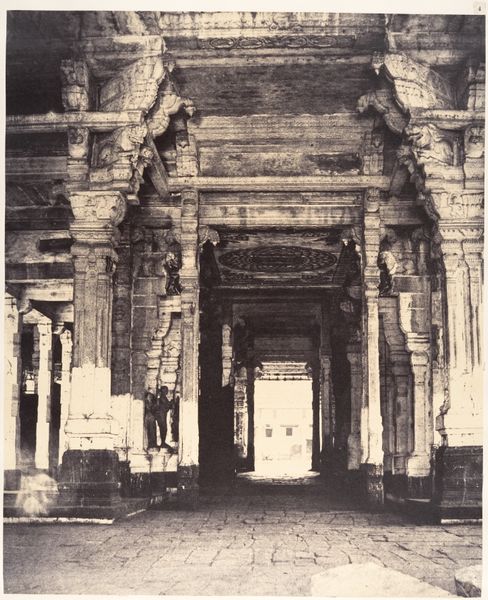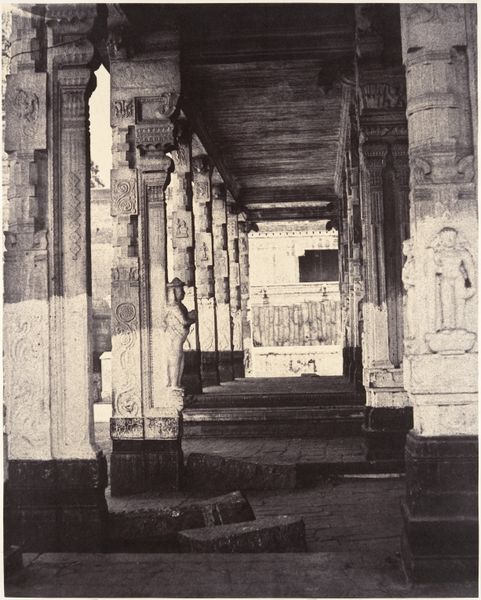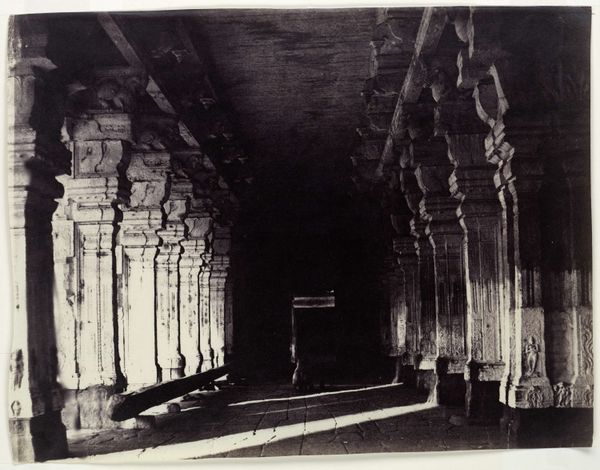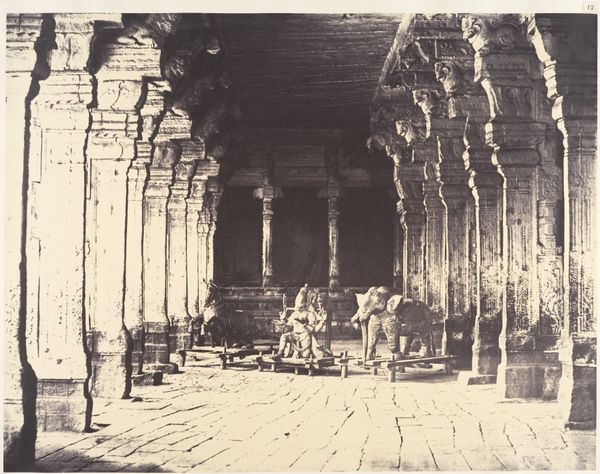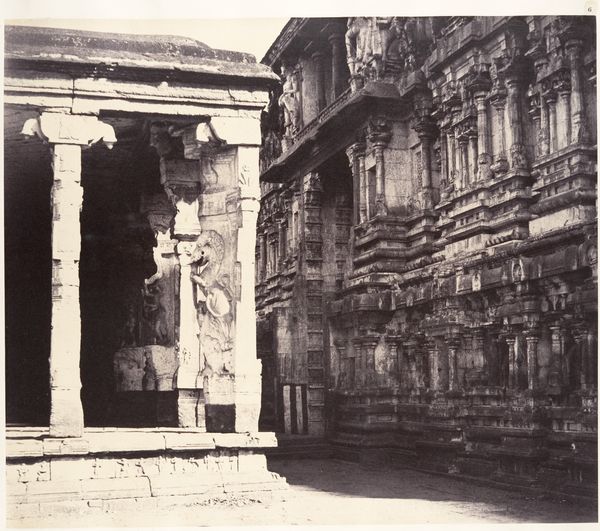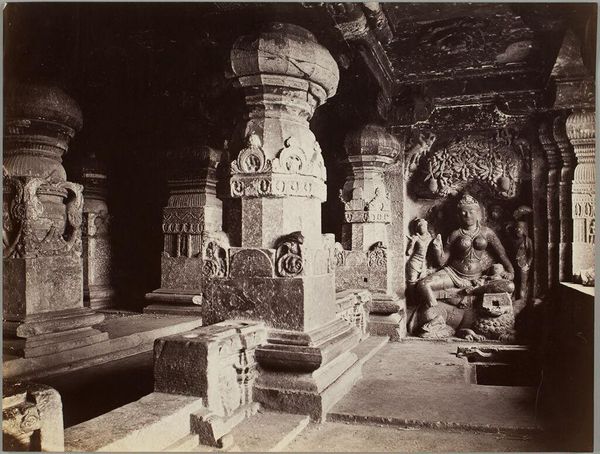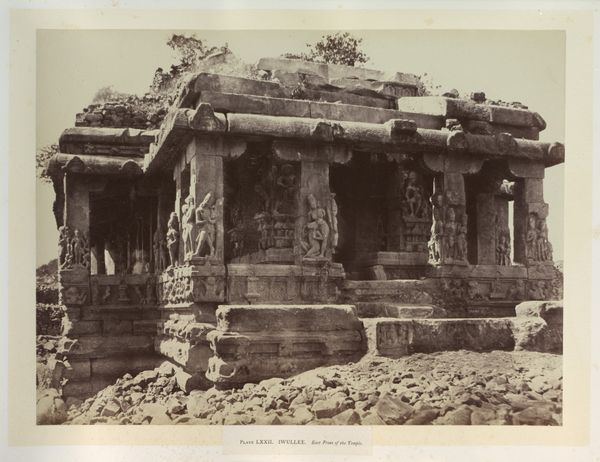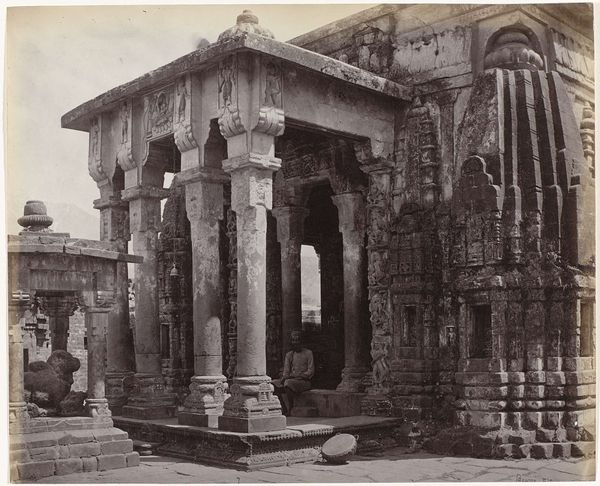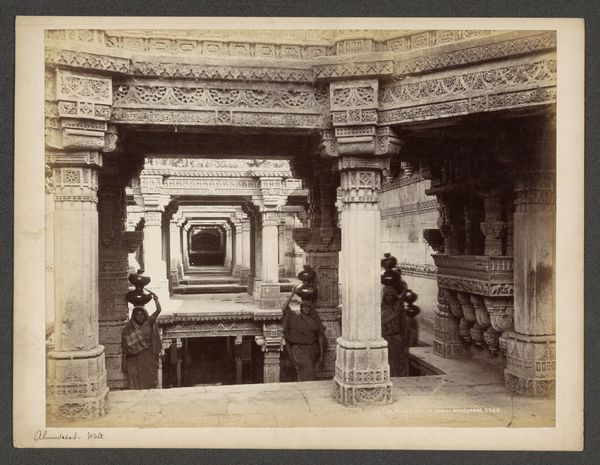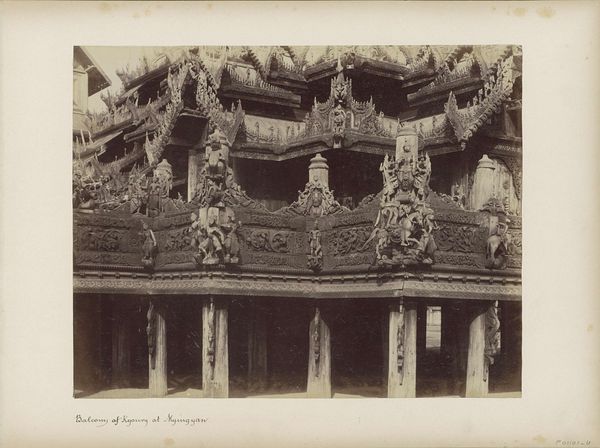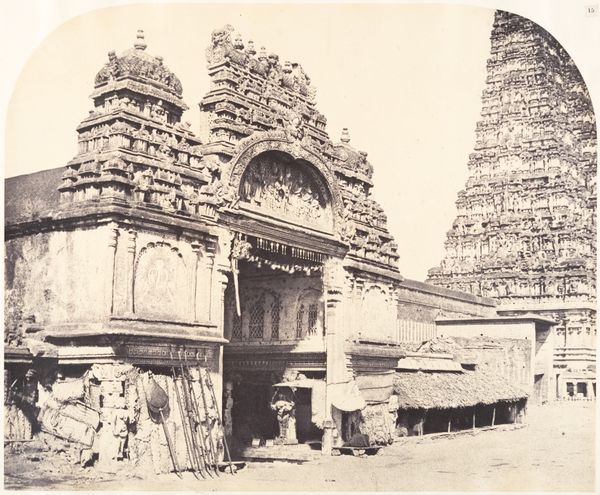
Entrance to the Thousand Pillared Mundapam in the Great Pagoda 1858
0:00
0:00
print, photography, architecture
# print
#
landscape
#
photography
#
geometric
#
ancient-mediterranean
#
islamic-art
#
architecture
Dimensions: Image: 33 x 30.7 cm (13 x 12 1/16 in.) Mount: 57.1 x 45 cm (22 1/2 x 17 11/16 in.)
Copyright: Public Domain
Editor: So, we’re looking at Linnaeus Tripe’s photograph, "Entrance to the Thousand Pillared Mundapam in the Great Pagoda," taken in 1858. It’s a striking image of ancient architecture. I'm immediately drawn to the intense symmetry and the almost oppressive weight of the stone. How should we interpret this work in terms of its cultural impact? Curator: It's essential to consider the context of British colonial photography in mid-19th century India. Tripe was documenting these sites under the auspices of the British government, essentially creating a visual inventory of the land and its resources, including its architectural heritage. Editor: Ah, like a visual survey intended to establish their dominance and inform future administrative or even military endeavours? Curator: Precisely. Think about how this image might have been presented back in England. Would it evoke a sense of wonder, demonstrating the skill and grandeur of 'exotic' cultures, or might it subtly imply the need for British oversight and "preservation"? Editor: That shifts my perspective quite a bit. So, the photograph is not just a neutral depiction of an impressive temple, but a statement of power, using the image to establish authority? Curator: Absolutely. And note the careful composition, the way the light emphasizes the monumentality of the structure. Tripe wasn't simply taking snapshots; he was constructing a narrative. How do you think the photograph being in black and white contributes to this message? Editor: I hadn't thought about that. Perhaps the monochrome palette adds a sense of timelessness, or maybe even projects a romanticized vision of a culture, making it feel simultaneously distant and knowable. Thanks, I'll remember to consider the layers of cultural messaging behind these historical photos. Curator: Indeed. It’s important to acknowledge that historical photographs are far from simple recordings of reality.
Comments
No comments
Be the first to comment and join the conversation on the ultimate creative platform.
